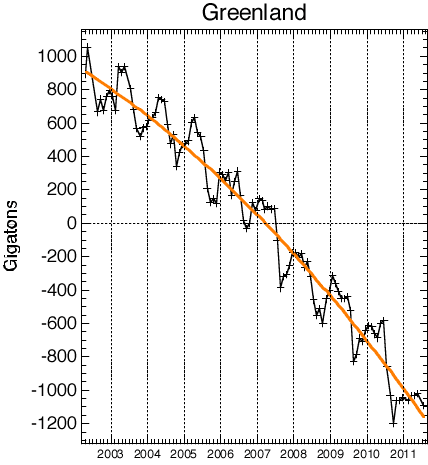
Figure 1: Surface albedo of the Greenland ice sheet (average of all elevations) between March and October in each year from 2000 to 2012. (Source: Ohio State University, 2012)
Recent findings suggest climate change in Greenland may be approaching a tipping point, beyond which amplifying feedbacks could lead (probably over centuries) to complete melting of the ice sheet, raising sea level by about 7 meters.
In June, a team of glaciologists led by Jason Box predicted that we would see melting across 100% of the ice sheet’s surface area in summer within a decade (Box et al., in press). They drew that conclusion from data on the Greenland ice sheet’s surface reflectivity, or “albedo”, showing the surface has gotten darker over the last 12 years. A darker surface absorbs more heat, leading to more melting, causing albedo to decrease further, and so on in a vicious circle.
The ice naturally gets less reflective in summer because the shape of the snowflakes changes and meltwater reveals impurities beneath the surface, but in 2012 Greenland has become much darker than in previous summers. This is occurring particularly at high elevations, which were previously too cold to melt and indeed had gained ice from increasing snowfall. This month, at the height of the melt season, Greenland’s albedo has fallen far off the charts:

Figure 1: Surface albedo of the Greenland ice sheet (average of all elevations) between March and October in each year from 2000 to 2012. (Source: Ohio State University, 2012)
Then NASA satellites recorded a startling abrupt acceleration of melting over just four days. On 8 July, about 40% of the ice sheet’s area had surface melt. By 12 July, surface melt had spread to no less than 97% of the area, penetrating all the way to the centre of Greenland, three kilometers above sea level:

Figure 2: Map of Greenland showing the area experiencing surface melt on 8 July (left) and on 12 July (right). (Source: NASA, 2012)
“This was so extraordinary that at first I questioned the result: was this real or was it due to a data error?” said Son Nghiem of NASA’s Jet Propulsion Laboratory. The melting has been confirmed by independent measurements, and attributed to a warm air mass sitting over Greenland during that week. Ice cores show this to be a 1-in-150-year event.
It is not yet clear whether this single occurence is indicative of a trend; a year with greater snowfall could return the albedo to a more normal state. Nevertheless, the extraordinary events of recent weeks are cause for concern when considered in the context of Greenland’s ice melting at an accelerating rate for the last decade, losing more than 2 trillion tonnes in total:

Figure 3: Greenland ice sheet mass relative to the 2002-2011 average.
According to recent modeling (Robinson et al, 2012), the tipping point for eventual total melting of the Greenland ice sheet could be a global temperature of around 1.6°C above preindustrial. Worse, the lower end of the range of possibilities is only 0.8°C, equal to today’s global temperature.
There is broader evidence that no significant cushion remains between today’s climate and a dangerous level of warming. In the last interglacial age 125,000 years ago, called the Eemian, global temperature was only ~1°C warmer than preindustrial, ie. only a couple of tenths of a degree warmer than today (Hansen et al., in press). Yet the poles were several degrees warmer, there was no summer sea ice in the Arctic, and multiple studies using different methodologies (Kopp et al., 2009; Dutton & Lambeck, 2012) say sea level was 6-9 meters higher (meaning at least partial melting of the Greenland and/or West Antarctic ice sheets).
All this points to the conclusion we may already be getting close to a dangerous level of global warming. If humanity rapidly cuts global CO2 emissions to zero or near-zero, it might be possible to return the Earth to energy balance and prevent much further warming (Hansen et al., in press). If business-as-usual emissions continue for much longer, there is a risk that eventual melting of the Greenland ice sheet could become irreversible.
This is a cross-post from Precarious Climate.
Posted by James Wight on Thursday, 2 August, 2012
 |
The Skeptical Science website by Skeptical Science is licensed under a Creative Commons Attribution 3.0 Unported License. |